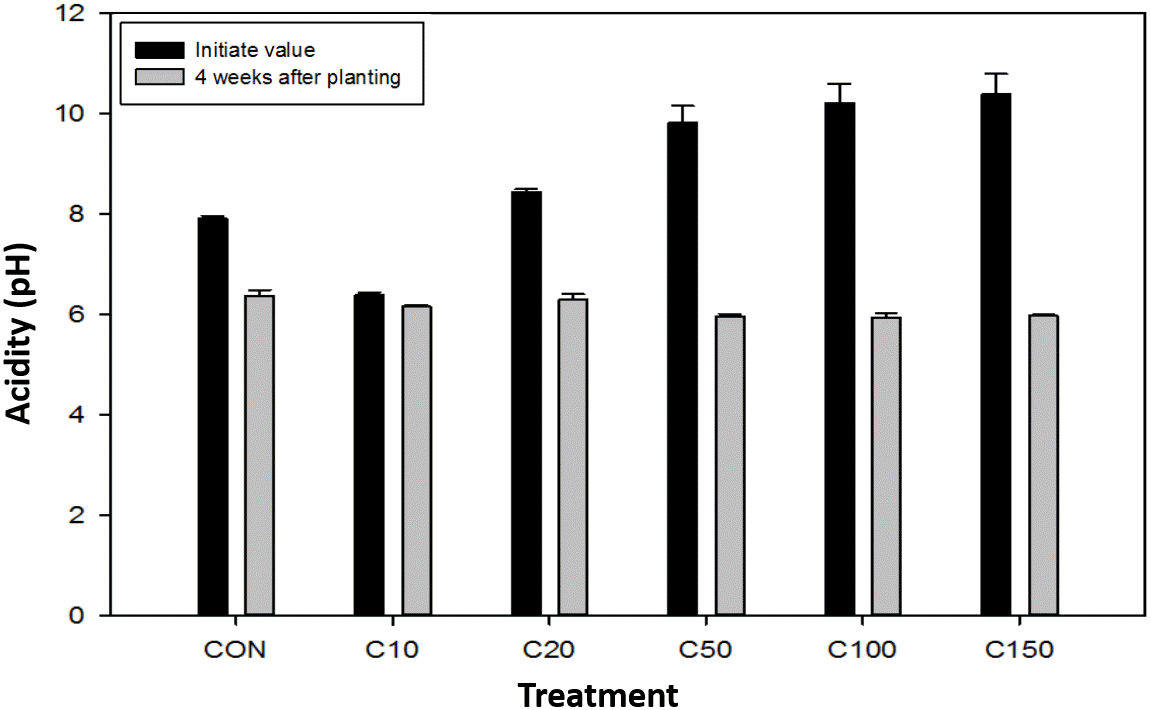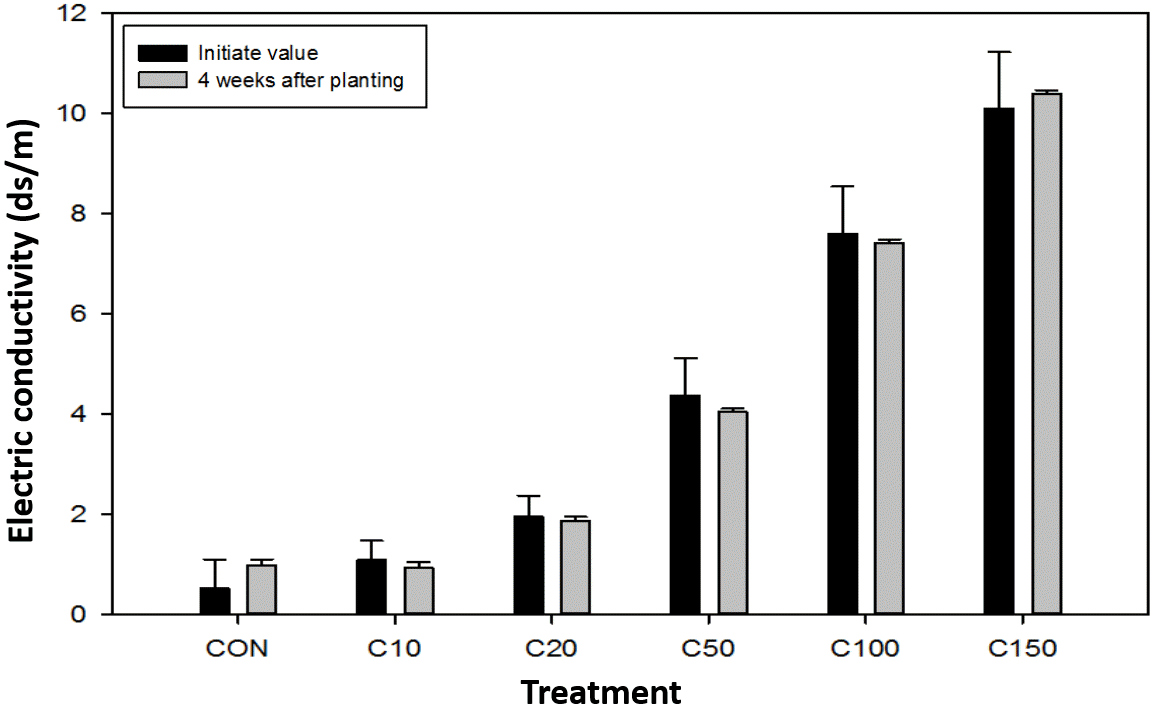Acosta-Motos, J.R., P. Diaz-Vivancos, S. ├ülvarez, N. Fern├Īndez-Garc├Ła, M.J Sanchez-Blanco, J.A. Hern├Īndez. Physiological and biochemical mechanisms of the ornamental Eugenia myrtifolia L. plants for coping with NaCl stress. Planta. 2015. 242(4):829-846.


Baek, M.J., T.J. Yoon, D.G. Kim, C.Y. Lee, K.J. Cho, Y.J. Bae. Effects of road deicer runoff on benthic macroinvertebrate communities in Korean freshwaters with toxicity tests of calcium chloride (CaCl2). Water Air Soil Pollut. 2014. 225(6):1961-1966.

Borgognone, D., M. Cardarelli, L. Lucini, G. Colla. Dose CaCl2 play a role in improving biomass yield and quality of cardoon grown in a floating system under saline condition? HortScience. 2014. 49(12):1523-1528.

Dang, Y.P., R.C. Dalal, D.G. Mayer, M. McDonald, R. Routely, G.D. Schwenke, S.R. Buck, I.G. Daniells, D.K. Singh, W. Manning, N. Ferguson. High subsoil chloride concentrations reduce soil water extraction and crop yield on Vertisols in northeastern Australia. Crop Pasture Sci. 2008. 59(4):321-330.

Dolatabadian, A., S.A.M.M. Sanavy, F. Ghanati. Effect of salinity on growth, xylem structure and anatomical characteristics of soybean. Notulae Sci. Biol. 2011. 3(1):41-45.

Dudley, M.M., W.R. Jacobi, C.S. Brown. Roadway deicer effects on the germination of native grasses and forbs. Water Air Soil Pollut. 2014. 225:1984.

El-Gendy, A.S., N. Biswas, J.K. Bewtra. A floating aquatic system employing water hyacinth for municipal landfill leachate treatment: effect of leachate characteristics on the plant growth. J. Environ. Eng. Sci. 2005. 4(4):227-240.

Guan, B., J. Yu, X. Chen, W. Xie, Z. Lu. Effects of salt stress and nitrogen application on growth and ion accumulation of Suaeda salsa plants. In Remote Sens. Environ. Transport. Engin. 2011 International Conference. 2011. 8268-8272.
Jang, H.S., S.G. Lee, J.H. Moon, C.H. Park. Effect of applied substrates on foliage growth in hydro-culture. J. Bio-Environ. Control. 2009. 18(4):460-467.
Kanawapee, N., J. Sanitchon, W. Lontom, P. Threerakulpisut. Evaluation of salt tolerance at the seedling stage in rice genotypes by growth performance, ion accumulation, proline and chlorophyll content. Plant Soil. 2012. 358(1-2):235-249.

Kang, K.C., J.H. Ju. Growth responses of Epipremnum aureum as affected by different water and activated carbon ratios in ornamental hydro-culture. J. Kor. Soc. People Plants Environ. 2013. 16(6):377-382.

Khan, M.M., R.S.M. Al-Mas'oudi, F. Al-Said, I. Khan. Salinity effects on growth, electrolyte leakage, chlorophyll content and lipid peroxidation in cucumber (Cucumis sativus L.). Int. Proc. Chem. Biol. Environ. Eng. 2013. 55(6):28-32.
Kim, H.W., N.Y. Chung. Effectiveness of the electrochemical sensor for the free chlorine measurement. J. Korean Soc. Manuf. Technol. Eng. 2012. 21(5):720-725.

Lee, J.J., S.G. Han, C.H. Kang, H.K. Cho, J.S. Jeong, K.B. Lee. Adaptability of saline-tolerant plants selected indoors at reclaimed land. Proc. 2008 Fall Symposium Korean J. Plant Resour. 2008. 111.
Mane, A.V., B.A. Karadge, J.S. Samant. Salinity induced changes in photosynthetic pigments and polyphenols of Cymbopogon Nardus (L.) Rendle. J. Chem. Pharm. Res. 2010. 2(3):338-347.
Nath Pandey, A., I. Bhushan Pandey, N. Sundarjibhai Panchal, A. Dayabhai Patel. Growth, water status and nutrient accumulation of seedlings of Jatropha curcas L. (Euphorbiaceae) in response to soil salinity. In Anales de biolog├Ła. Murcia: Universidad de Murcia, Servicio de Publicaciones. 2010.
Saha, P., P. Chatterjee, A.K. Biswas. NaCl pretreatment alleviates salt stress by enhancement of antioxidant defense system and osmolyte accumulation in mungbean (Vigna radiata
L.Wilczek). Indian J. Exp. Biol. 2010. 48(2):593-600.

Semiz, G.D., A. Ünlukara, E. Yurtseven, D.L. Suarez, I. Telci. Salinity impact on yield, water use, mineral and essential oil content of fennel (Foeniculum vulgare Mill.). J. Agric. Sci.. 2012. 18:177-186.

Soh, J.W., S.Y. Soh, S.Y. Nam. pH variance model depending on phosphate ion form. Korean J. Hortic. Sci. Technol. 2015. 33(6):854-859.

White, P.J., M.R. Broadley. Chloride in soils and its uptake and movement within the plant: a review. Ann. Bot. 2001. 88(6):967-988.

Xu, G., H. Magen, J. Tarchitzky, U. Kafkafi. Advances in chloride nutrition of plants. Adv. Agron. 2000. 68:97-150.

Yang, H., Z. Huang, C.C. Baskin, J.M. Baskin, Z. Cao, X. Zhu, M. Dong. Response of caryopsis germination, early seedling growth and ramet clonal growth of Bromus inermis to soil salinity. Plant Soil. 2009. 316(1):265-275.












